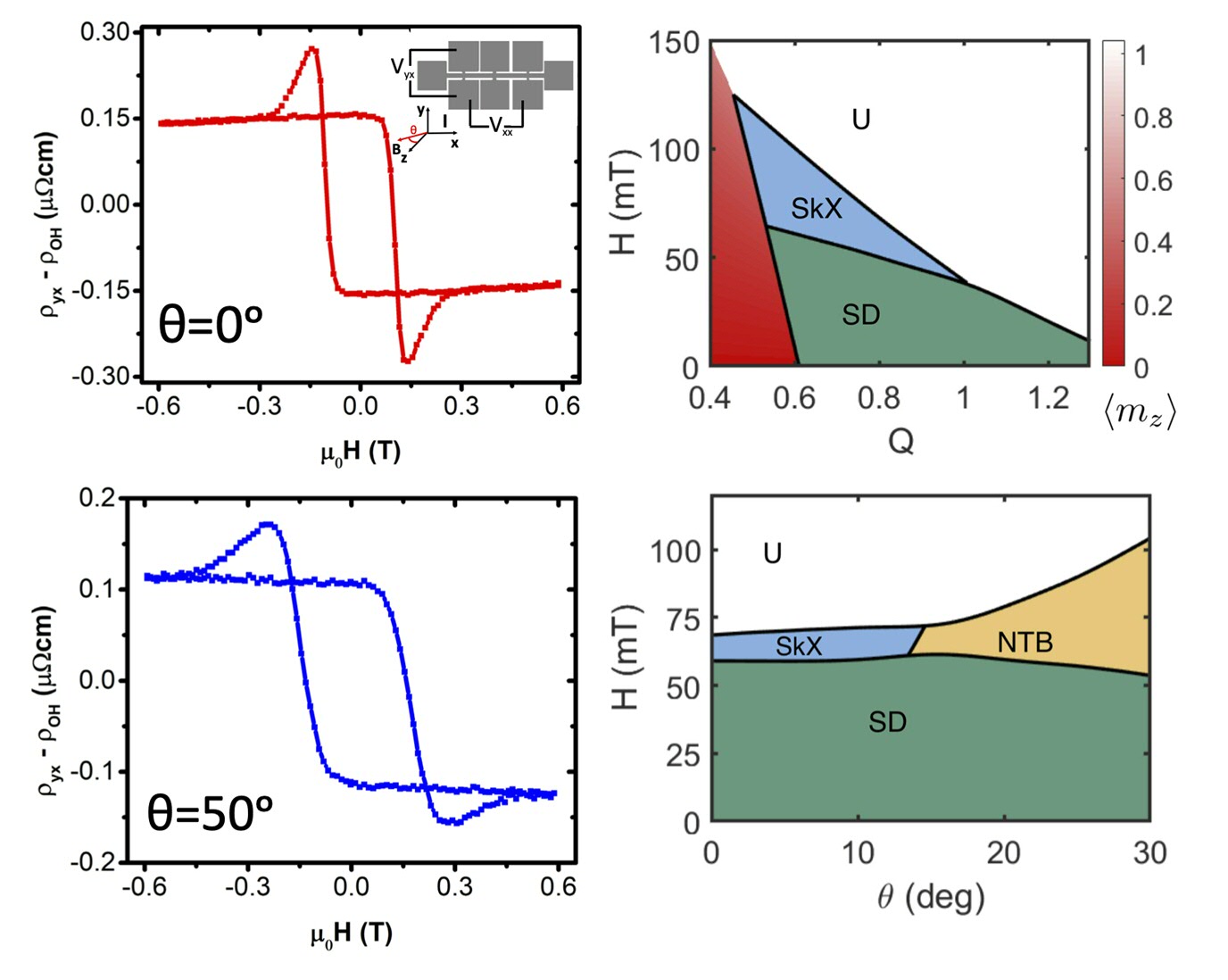Resilience and Adaptability: New pathways with Skyrmion bubbles
Researchers from the University of Groningen and TU Wien have detected signatures of the skew scattering in the ferromagnetic conductor, SrRuO3, associated with topological magnetic bubbles. This effect showed a surprising adaptability to different substrate surfaces and unique resilience to variations of temperature, strength and direction of the applied magnetic field. This research was published on July 27, 2020, as a Rapid Communication in Physical Review Research.

Magnetic bubbles are cylindrically shaped islands with reversed magnetization that can be set into motion by electric current pulses. They have been discovered about fifty years ago and were immediately employed to store digital information in non-volatile memory that can withstand harsh environments.
The recent discovery that in chiral magnets the size of magnetic bubbles can be reduced to a few nanometers, spurred the interest in them. This extremely small dimension makes the bubbles highly suitable for novel high-density magnetic memory devices. The magnetic dipoles in the nanosized bubbles, also known as skyrmions, form a knot that cannot be easily unwound. This non-trivial topology gives rise to a skew scattering of electrons off skyrmions – the so-called Topological Hall Effect.
The detection of signatures of the skew scattering in the ferromagnetic conductor, SrRuO3, advances the field of skyrmionics. It provides significant opportunities to tailor device interfaces for new magnetic memory technologies and novel hardware components for alternative computing strategies.
This research is conducted by two research groups of the UG’s Zernike Institute of Advanced Materials (ZIAM), led by Prof. Tamalika Banerjee (PhD students Ping Zhang and Arijit Das), Prof. Maxim Mostovoy (PhD students Evgenii Barts and Maria Azhar), and by researchers of the TU Wien, Austria.
Links:
| Last modified: | 11 August 2020 12.05 p.m. |
More news
-
04 July 2025
University of Groningen awards various prizes during Ceremony of Merits
The UG awarded different prizes to excellent researchers and students during the Ceremony of Merits on 4 July 2025.
-
02 July 2025
Relinde Weil reappointed as a member of the Supervisory Board UG
The Minister of Education has reappointed Relinde Weil for a second term as a member of the Supervisory Board of the University of Groningen.
